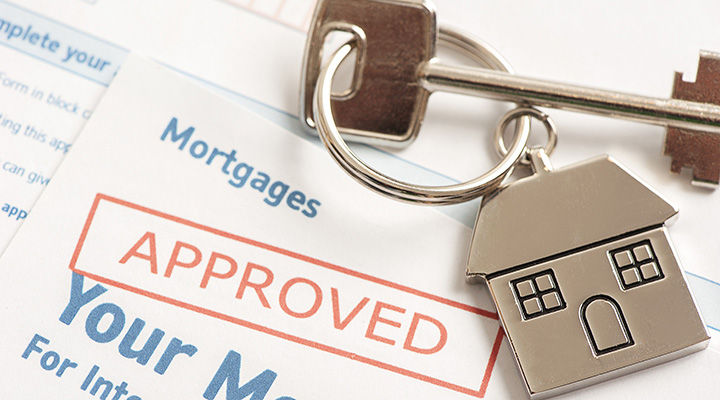Step-by-Step Process to Request Conventional Mortgage Loans
Step-by-Step Process to Request Conventional Mortgage Loans
Blog Article
The Important Aspects to Take Into Consideration When Choosing Between Fixed-Rate and Adjustable-Rate Mortgage Lendings
When evaluating home loan choices, borrowers encounter a critical choice between fixed-rate and adjustable-rate financings, each providing possible challenges and unique benefits. Secret factors to consider such as rates of interest security, predictability in month-to-month settlements, and the ramifications of potential rate modifications can considerably affect long-term economic health. In addition, recognizing the anticipated duration of homeownership and the total cost of borrowing can form one's strategy. As these factors link with specific monetary scenarios and take the chance of tolerance, the effects of this option may not be as uncomplicated as they appear. What nuances should be focused on in this vital decision-making process?
Rate Of Interest Stability
When choosing a home mortgage, recognizing rate of interest security is vital for informed decision-making. Rate of interest can considerably influence the general price of a home loan, and recognizing the nature of these rates is crucial for debtors. Fixed-rate mortgages use the advantage of constant month-to-month payments over the life of the financing, shielding debtors from market fluctuations. This stability makes it possible for property owners to intend their financial resources with better certainty, as they will not be impacted by climbing rate of interest.
On the other hand, adjustable-rate home mortgages (ARMs) begin with lower initial rates that may alter occasionally based upon market problems. While this can cause reduced payments initially, it also introduces uncertainty, as debtors might face boosted settlements if interest prices rise. For those thinking about an ARM, it is important to assess the likelihood of price adjustments, the potential for settlement boosts, and the length of the first fixed-rate duration.
Eventually, the option between adjustable-rate and fixed-rate home loans rests on private risk tolerance and financial circumstances. Understanding rates of interest security assists debtors make notified decisions that align with their lasting economic objectives.
Regular Monthly Settlement Predictability
While debtors commonly focus on passion rate stability, the predictability of month-to-month repayments is similarly vital in the home loan selection procedure (Conventional mortgage loans). Monthly repayment predictability plays a vital function in budgeting and monetary preparation, as it straight affects a house owner's cash money circulation and general economic wellness
Fixed-rate mortgages supply a consistent month-to-month repayment throughout the life of the car loan, allowing debtors to anticipate and intend their expenditures efficiently. This security can be specifically beneficial for first-time buyers or those on a set revenue, as it removes the uncertainty linked with rising and fall settlements.
On the other hand, adjustable-rate mortgages (ARMs) typically include reduced preliminary settlements that can change gradually, leading to prospective irregularity in regular monthly commitments. While initially attractive, this changability can complicate economic planning, specifically if consumers do not account for future price changes.
Prospective Rate Changes
In the world of variable-rate mortgages (ARMs), potential rate modifications stand for a significant aspect that consumers should carefully think about. Unlike fixed-rate mortgages, where the rates of interest continues to be unchanged for the life of the finance, ARMs are identified by fluctuating rate of interest that are tied to market indices. This variability can result in substantial changes in monthly payments, impacting the customer's monetary planning and budgeting.
Customers should be conscious of the margin and index made use of to calculate these changes, as they directly influence future rate of interest prices. In addition, ARMs commonly include caps that restrict just how much the interest price can increase at each modification and over the life of the funding, which can give some level address of defense against drastic rate hikes.
Comprehending these prospective adjustments is important for borrowers, as they straight affect the original source long-lasting settlement responsibilities. Therefore, examining personal monetary situations and run the risk of resistance is vital when deciding whether an ARM lines up with one's economic goals.
Funding Term Factors To Consider
Lending term factors to consider play a crucial role in the decision-making procedure for consumers choosing between adjustable-rate and fixed-rate mortgages. The length of the finance term substantially impacts regular monthly settlements, rate of interest, and overall economic planning. Fixed-rate home loans typically use terms of 15 to three decades, offering stability in regular monthly settlements and predictability in budgeting. This can be particularly appealing for consumers who prepare to remain in the same home long-term and prefer the certainty of fixed settlements throughout the life of the funding.

Ultimately, customers should examine their personal situations, monetary objectives, and pop over to this web-site market problems when considering the effects of funding term selections within each mortgage type.

Overall Cost of Borrowing
The general cost of borrowing is a critical element that can dramatically affect a consumer's option in between adjustable-rate and fixed-rate mortgages. Fixed-rate home loans use predictable month-to-month settlements, as the rates of interest stays consistent throughout the finance term. This predictability can lead to lower general costs, especially in a steady or declining rates of interest atmosphere. Customers can spending plan effectively, knowing their settlements will not rise and fall.
On the other hand, variable-rate mortgages (ARMs) normally start with reduced preliminary prices, resulting in reduced in advance prices. However, these prices can enhance after an initial duration, resulting in potentially higher lasting prices. Debtors should consider the frequency and extent of price adjustments, as well as the overall car loan duration, to precisely examine the financial ramifications.
Furthermore, the general price of borrowing encompasses not only rate of interest however additionally fees and other linked costs, such as shutting prices and insurance policy (Conventional mortgage loans). When assessing mortgage choices, borrowers need to conduct an extensive expense evaluation over the life of the funding. By doing so, they can make an educated decision that straightens with their monetary goals and take the chance of resistance
Final Thought
In conclusion, selecting between fixed-rate and adjustable-rate mortgage requires cautious consideration of numerous vital variables. Rates of interest stability and month-to-month repayment predictability are critical for effective budgeting, while the capacity for rate modifications in ARMs presents financial unpredictability. In addition, the awaited period of homeownership and the general price of borrowing, consisting of rates of interest and linked costs, should straighten with individual monetary situations and take the chance of tolerance. Such a detailed evaluation will certainly promote enlightened decision-making in home loan selection.
Key factors to consider such as interest rate stability, predictability in regular monthly payments, and the implications of prospective price modifications can substantially affect lasting monetary health and wellness. Rate of interest rates can substantially affect the overall price of a mortgage, and acknowledging the nature of these prices is crucial for debtors. Unlike fixed-rate mortgages, where the rate of interest rate remains the same for the life of the financing, ARMs are defined by changing rate of interest prices that are tied to market indices. Furthermore, ARMs typically consist of caps that limit exactly how a lot the passion price can enhance at each adjustment and over the life of the lending, which can give some level of security against radical rate hikes.
Passion rate security and monthly repayment predictability are extremely important for reliable budgeting, while the capacity for price changes in ARMs introduces financial unpredictability.
Report this page